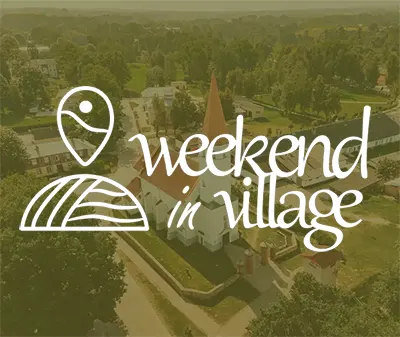Kalnaziedi Hillfort in Aizkraukle – a Cultural Monument of National Significance
15.08.2025Location
Kalnaziedi Hillfort is situated in the eastern part of Aizkraukle city, approximately 500 meters from the right bank of the Daugava River. It lies near the former “Kalnaziedi” homestead, where the Aizkraukle History and Art Museum “Kalna Ziedi” now operates.
The hillfort stands on a 17-meter-high mound, surrounded on three sides by deep ravines. On the eastern side, a small stream flows through the ravine into the Daugava. The hillfort plateau measures approximately 110 × 80 meters and has a roughly rectangular shape. For many centuries, both the plateau and the surrounding flat areas were ploughed, so the original relief and, possibly, the defensive ditches and ramparts that were once constructed have gradually disappeared over time.
A 3D model of the hillfort can be viewed in the video here: https://www.youtube.com/watch?v=OlXUz6b5228
Historical Surveys
The renowned Latvian cultural and archaeological enthusiast, cartographer, folklore researcher, and founder of the Dievturība movement, Ernests Brastiņš (1892–1942), surveyed and mapped approximately 282 hillforts across Latvia between 1923 and 1930. He published a four-volume series titled “Latvijas pilskalni” (“Latvian Hillforts”). In the fourth volume, "Latvijas pilskalni. Vidzeme" (“Latvian Hillforts. Vidzeme”), Brastiņš writes about Kalnaziedi Hillfort: “It is located in a picturesque area, offering splendid views of the Daugava River and its broad valley.”
Brastiņš noted that on the northern side of the hillfort, where its defenses were weaker, there were likely ditches in ancient times, though they had long since disappeared because “the plough has already smoothed out the possible earthworks.” He also observed that ploughmen had never found anything of particular significance at the site. According to Brastiņš, this hillfort belongs to a later period of Latvian hillfort construction and was hastily built during times of insecurity.
Note: A memorial site has been established for Ernests Brastiņš and his family at the New Cemetery in Skrīveri. The location was chosen because Brastiņš’ sister and her family lived in Skrīveri and financially supported his expeditions. Ernests Brastiņš was deported to Siberia in 1940, where he perished. In Latvia, memorials to him exist in Skrīveri (Aizkraukle Municipality), Straupe (Cēsis Municipality), and a monument in Riga’s Kronvalda Park.
Archaeological Research
The hillfort has been the site of several archaeological excavations: in 1963–1964 under the direction of Vladislavs Urtāns, and in 1981–1982 led by Adolfs Stubavs and Nadežda Jefimova.
Excavations have shown that Kalnaziedi Hillfort was inhabited from very early times—ranging from the end of the 1st millennium BCE to approximately the 9th–10th centuries CE.
Relatively few artefacts and ceramic materials were recovered during the excavations. However, based on the findings, it was concluded that the hillfort had a basic settlement during the Late Bronze and Early Iron Age. This is evidenced by discovered items such as metal objects, a fragment of a stone axe, grinding stones, and streaked ceramic shards.
No signs of intensive economic activity or trade connections—typical of other hillforts along the Daugava—were found. This suggests that Kalnaziedi Hillfort likely served as a refuge where people took shelter in times of danger rather than as a permanent settlement.
Stone Sign “Kalnaziedi Hillfort”
In 1995, a stone sign bearing the inscription "Kalnaziedu pilskalns" (“Kalnaziedi Hillfort”) was installed near the hillfort. The sign was created by one of Latvia’s most prominent creators of cultural symbols, sculptor Vilnis Titāns.
As noted in the book "Vilnis Titāns" by Anda Treija, following the initiative of Imants Ziedonis, the first chairman of the Latvian Culture Fund, such cultural markers were established across Latvia to preserve the memory of ancient sites and help people recognize them.
Stories and Legends
Local inhabitants have long told that in ancient times, when the forests were denser and the Daugava still spoke to people, a wise man lived at Kalnaziedi Hillfort who grew flowers with special powers. These flowers bloomed for only one night each year—during the summer solstice—and their fragrance healed illnesses and drove away evil spirits. People traveled from distant lands to find the flowers, but they revealed themselves only to those with pure hearts and thoughts—like a flash of light over the hill in the early morning.
Information compiled by Aizkraukle Tourist Information Point, 4 Lāčplēša Street, Aizkraukle. This article was created using information from the websites www.latvijas-pilskalni.lv, www.mantojums.lv, and www.zudusilatvija.lv, in cooperation with the staff of the Aizkraukle History and Art Museum “Kalna Ziedi” and with the support and information provided by Daina Vancāne.
- Aizkraukle municipality and Koknese Tourism Information centre
1905. gada iela 7, Koknese
(+371) 29275412, (+371) 65161296 - Aizkraukle Tourism Information point
Lāčplēša iela 4, Aizkraukle
(+371) 25727419 - Jaunjelgava Tourism Information point
Jelgavas iela 33, Jaunjelgava
(+371) 27366222 - Pļavinas Tourism Information point
Daugavas iela 49, Pļaviņas
(+371) 22000981 - Skrīveri Tourism Information Point
Daugavas iela 85, Skrīveri, Skrīveru pagasts
(+371) 25661983 - Staburags Tourism Information point
Staburaga saieta nams, 2. stāvs, Staburags, Staburaga pagasts
(+371) 29892925 - Nereta Tourism Information point
Dzirnavu iela 5, Nereta, Neretas pagasts
(+371) 26674300 - Mazzalve Tourism Information point
Skolas iela 1, Ērberģe, Mazzalves pagasts
(+371) 26156535 - Irši Manor Barn - Magazina
Irši, Iršu pagasts
(+371) 29275412














